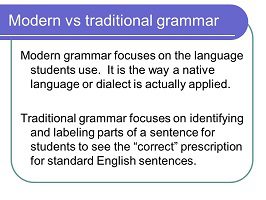What is Case grammar
Case grammar
Within the enormous transformation that grammar underwent throughout the twentieth century, the contribution of the so-called generative and transformational grammar stood out in a particularly relevant way. With the application of their universalist principles and the introduction in the linguistic analysis of transformational elements to represent the displacement of the constituents and, in general, all manifestations of natural language, these currents of analysis forever changed the paradigm of grammatical studies.
Within its inherent complexity, theories and currents emerged to explore the full potential that opened its first conclusions. In that context, one of the deepest and most interesting trends was the so-called case grammar.
By case grammar we understand a small analytical module of grammar, which studies both the distribution and the movement of the noun phrases. As a theory for linguistic analysis, he was born in 1968 by Charles J. Fillmore , an American specialist trained in the school of transformational grammar.
The case grammar understands that all preaching is constituted by a verb that in turn is combined with one or several thematic roles. These roles can be the Agent, the Instrumental or the Theme, and take the apparent form of noun phrases. The distribution and grammatical agreement of all these roles in their relationship with the verb and among themselves is given by the one property of each of them: the grammatical case. Thanks to the grammatical case, which is the one who assigns a grammatical function to each element of the sentence, it acquires meaning and coherence at all levels.
Thus, according to Fillmore, each verb that forms a preaching is the one who selects a series of “thematic roles” – or profound cases in terms of transformational grammar -, and these papers form their casual framework. The framework establishes all the relevant information around the semantic spectrum of verbal, adjective and nominal phrases that may appear in preaching, although it is subject to an important restriction: each deep case may appear only once in each sentence.
In a predicate, only verbs and prepositions are trained to assign cases. These elements are those that impose the morphological case to each of the nominal phrases that appear.
Thus, it can be seen that while the cases and the roles are intrinsically related, the former have an eminently syntactic nature, while the latter relate to the semantic level of the sentence.
The grammar of the cases
Case grammar is an attempt to establish a semantic grammar .
Using a modified form of the Valencian theory Fillmore suggests that the verb establishes a series of cases in a sentence: they are like grooves, which usually do not need everything to be filled. For example, consider the following phrases:
- Maria opened the door with a key.
- Maria opened the door.
- One of the keys opened the door.
- The door opened.
In (1) the semantic cases are: Maria – agent; the door – object, a key – instrument.
In (2) they are as in (1), except that there is no instrument.
In (3) the cases are: a key – instrument; The door – object.
In (4) the only case is the door – object.
In other words, to open requires at least that the object be specified in a sentence.
Note that the semantic object may appear as a syntactic subject.
Compare with:
(5) These shirts wash easily.
(6) The building collapsed.
(7) The car rolled back.
(8) On the table moved.
If the semantic object is animated, it will usually be called experience.
Examples:
(9) Ana tripped and fell to the ground. (Something happened to her).
(10) John fell asleep.
(11) they took them away.
(12) The old man died.
Consider these two sentences:
(13) They scare me (They – Agent In other words, actively and deliberately scary …).
(14) They scare me. (They – object they get scared when I see them … Their mere appearance, existence causes fear in me).
